Working on your swing vs. hitting
You have a player who is struggling badly at the plate. You guys have spent countless hours in the cage and on the tee. You have changed the stance, the load, the bat path, they’re using their body more efficiently, they are on plane with the ball, and they still aren’t hitting a lick in the games.
Those mechanics, or swing, fixes likely made them better at swinging the bat, but did they really make them any better at hitting? Maybe the key lies in working more on hitting, not just on swinging?
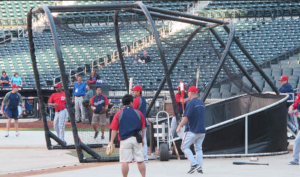 What’s the different you ask? Here are a few examples:
What’s the different you ask? Here are a few examples:
Swinging - Only paying attention to the pitcher when you are hitting.
Hitting - Paying attention to the pitcher when your teammates are hitting. Do you know this pitcher throws only curveballs after fastball strikes and always throws a fastball after a curveball ball?
Swinging - Guessing what pitch is coming next.
Hitting - Having an educated guess at what pitch and location is coming next. This team hasn’t busted anyone in all game with two strikes, better look away!
Swinging - Learning to load properly. We’ve all heard this one, “Jonny can’t hit slow pitching.” My guess is Jonny works on his swing a lot, but doesn’t work on hitting very much. Make sure he sees a variety of different locations and velocities during his BP sessions.
Hitting - Being able to load on time for a variety of different pitches, locations, and velocities. The job of a BP pitcher shouldn’t be to throw the ball right down the middle, anyone can hit that.
Swinging - Blaming the BP pitcher for all the bad pitches you are swinging at in the cage.
Hitting - Learning to take those bad pitches, because when else are you going to get to work on it? In the game?
Swinging - See ball, hit ball in the cage or BP.
Hitting - Putting yourself in advantage (1-0, 2-0, 2-1, 3-1, 3-0) and disadvantage (0-1, or any 2 strike count) and working on your pitch selection and intent for these counts during BP or in the cage.
Swinging - Putting the ball on a tee right down the middle and taking 100 swings.
Hitting - Putting the tee at various positions and heights, then visualizing yourself in various counts, the ball coming at you then swinging.
Hitting - Performing a drill that requires you to think and react BEFORE swinging at the ball on the tee.
Swinging - Having the plan of just “hitting the ball” when you go to the plate.
Hitting - Adjusting the intent of the swing, and your plan based on the count.
Swinging - Not knowing your strengths and weaknesses. You just can’t get to that inside fastball, but man does it look good!
Hitting - Knowing your strengths and taking advantage of them in the game, and working on your weaknesses in practice. You can’t hit a fastball on the outside corner, so you make it a point of emphasis in practice, on your tee work, and yes, that BP round may not look quite so great if you’re working on your weakness.
Players spend a lot of time on their swing, and it is usually the first place they turn when they are struggling, but the best swing with the most bat speed in the world won’t do you much good if you’re swinging at 2-0 breaking balls in the dirt and letting 1-2 fastballs down the middle go by.
Hitting can be improved in practice, but not with traditional, unfocused tee work and batting practice.
If you’d like more information on how you can work “hitting” into your tee work and batting practice, check out our “Top 5 Hitting Drills That Translate Practice Success to Game Performance”
More from my site
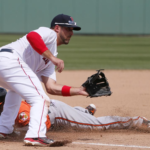 CCA Podcast 092: 7 plays most players are probably unprepared for
CCA Podcast 092: 7 plays most players are probably unprepared for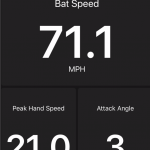 CCA Podcast 166 – Creating Competition in Practice
CCA Podcast 166 – Creating Competition in Practice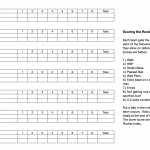 CCA Podcast 241 – Team Defense Charts – Rocket Index
CCA Podcast 241 – Team Defense Charts – Rocket Index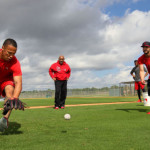 The Toughest Defensive Play Your Pitcher Will Face and How to Defend It
The Toughest Defensive Play Your Pitcher Will Face and How to Defend It CCA Podcast 132 – Handling slumps, what a coach can do…
CCA Podcast 132 – Handling slumps, what a coach can do… Reaction to Richard Sherman
Reaction to Richard Sherman
 Posted by Kyle Nelson
Posted by Kyle Nelson- Posted in Hitting
 Jul, 30, 2015
Jul, 30, 2015 No Comments.
No Comments.
Elite members login here
Check out what’s New/Hot!
Recognizing, Diagnosing, and Fixing Common Hitting Flaws eCourse The 3 metrics we tested on Blast motion sensors this year Sneak Peek Inside an Elite Q and A The batting practice continuum Elite Member’s area table of contents 50+ “Chaos” hitting drills
5 sample Chaos hitting drills FREE
Mental Skills and Culture Building The hitting pyramid Welcome Elite Member, Trey! Ideas for a pitcher first practice 12 week bat speed improvement plan Make plans this offseason to have your team playing their best baseball at the end of the year” Top 5 hitting drills to translate practice skill to game performanceHow we used Blast Motion sensors with a team in 2019
What to do if your hitters are overmatched Welcome Elite Member, Tommy! Setting your baserunners up for success Welcome Elite Member, Mike! A consulting call with Elite Member Matt FREE Web Clinic: Developing Athletic, Consistent, Extraordinary Infielders
 Coach Kyle Nelson
Coach Kyle Nelson